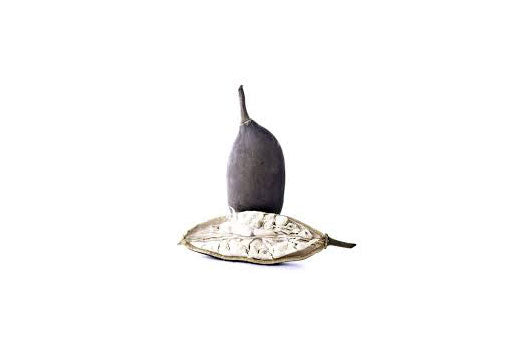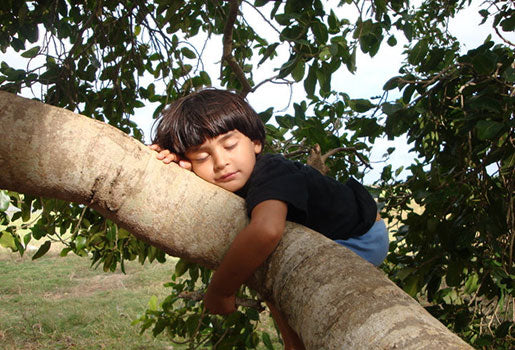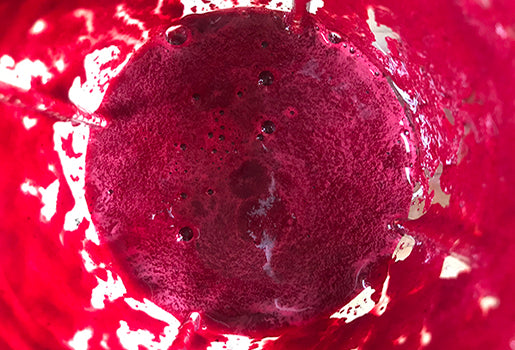The Tree of Life and the Miraculous Baobab Tea

My permaculture partner in Kenya, Priscilla, introduced me to Baobab tea. Every morning she began her day with a warm cup of baobab tea, which she would gently sweeten with honey foraged from miles and miles away. "It's so nutritious, and it sustains me for hours", she said. She would go on and on about how healthy this tea was.
Health Benefits of Baobab Tea
- Energy release
- Improves immune system
- Promotes healthy, glowing skin
- A powerful prebiotic
- Contains more antioxidants than any other whole fruit.
- Fights fatigue
- Lowers blood sugar
- Excellent source of vitamin C and minerals such as calcium, zinc, phosphorous, potassium, and manganese—great for pregnant women
- Lowers acidity levels in the body, balancing out internal pH
- Excellent for exercise recovery
Baobab Tea Recipe
- 8 oz warm water (hot water may kill the antioxidants)
- 1 tsp baobab
- 1/2 teaspoon raw honey (or to taste)
Let sit 10 minutes to get full release of flavor.
The Tree of Life
Baobab tea comes from the fruit of the baobab tree, aka tree of life. It was nicknamed this because every part of the tree can be used to sustain life. The fruit is amazing and grow s unlike any other. While still on the branch, it dries up. Its soft green skin hardens to a thick coconut-like shell with a velvety texture. The fruit inside is completely desiccated and can only be accessed with a hammer. Once collected, the pulp is pulverized and added to stews, water, cereal you name it, as it's a way to boost nutrition. It's even added to sugar to help with fermentation. The seeds are collected and used to make jewelry, crafts, they are eaten raw or roasted. They are also used to produce oil, which I am now using in Blue Lotus Body Oil (more on that next time). The young leaves of Baobab are used as vegetables and as medicinal herbs to cure fever; and when dried, they make good herbal tea. The flowers of Baobab are loved by honey bees resulting in delicious Baobab honey. The trunk can be used as water containers while the fruit pods (with seed and pulp removed) make musical instruments. The roots are used to make rope, string, baskets. The fibers of the tree trunk are also used for making baskets.
s unlike any other. While still on the branch, it dries up. Its soft green skin hardens to a thick coconut-like shell with a velvety texture. The fruit inside is completely desiccated and can only be accessed with a hammer. Once collected, the pulp is pulverized and added to stews, water, cereal you name it, as it's a way to boost nutrition. It's even added to sugar to help with fermentation. The seeds are collected and used to make jewelry, crafts, they are eaten raw or roasted. They are also used to produce oil, which I am now using in Blue Lotus Body Oil (more on that next time). The young leaves of Baobab are used as vegetables and as medicinal herbs to cure fever; and when dried, they make good herbal tea. The flowers of Baobab are loved by honey bees resulting in delicious Baobab honey. The trunk can be used as water containers while the fruit pods (with seed and pulp removed) make musical instruments. The roots are used to make rope, string, baskets. The fibers of the tree trunk are also used for making baskets.
What's amazing is that in order to benefit from the tree's provisions, Africans who use this tree, as well as aboriginals (from Australia) have understood the importance and necessity of harvesting the tree's elements in a sustainable way. I wish we could all learn this and apply it in our daily lives. The tree is, sadly, nearing extinction, not because of its use but because developers cut it down.
Baobab fruit, is now slowly becoming an international trend as it makes for a perfect supplement and tea. It thus needs to be harvested with a serious dedication to sustainable sourcing, if not the tree will go extinct.
=> Would you be interested in fairly-trade baobab tea? Let me know by sending me an email or responding to this blog.
2 Responses
Jess
I’ve been looking everywhere for baobab leaf tea! The Republic of Tea used to carry one, but discontinued it, and and I am just gutted because that tea is the only thing that has ever helped me with breathing issues associated with a mold allergy. Is it something you are able to sell right now?
Leave a comment
Comments will be approved before showing up.




Denise Jeremiah
July 03, 2020
Greetings, I am Denise Jeremiah from fit and Blessed Herbs looking to source Boabab Tea and powder, perhaps you can help me.